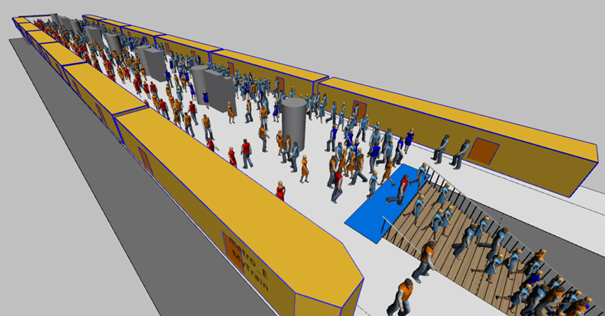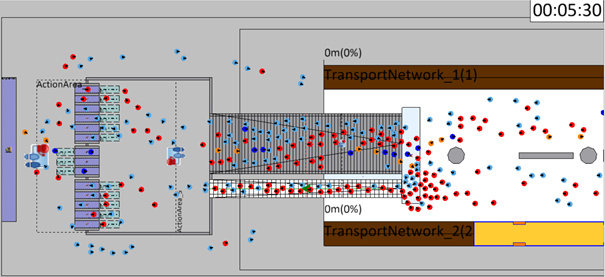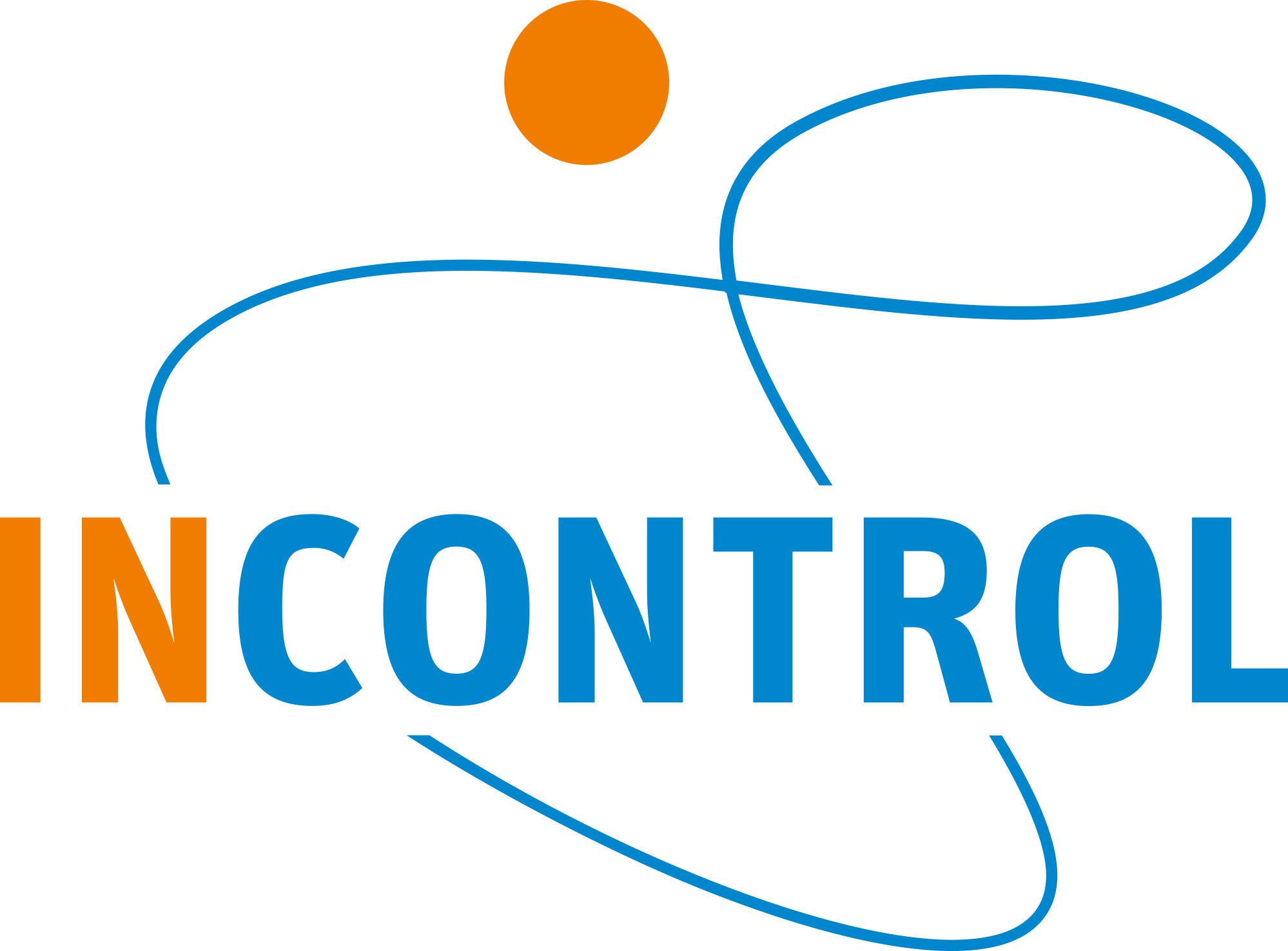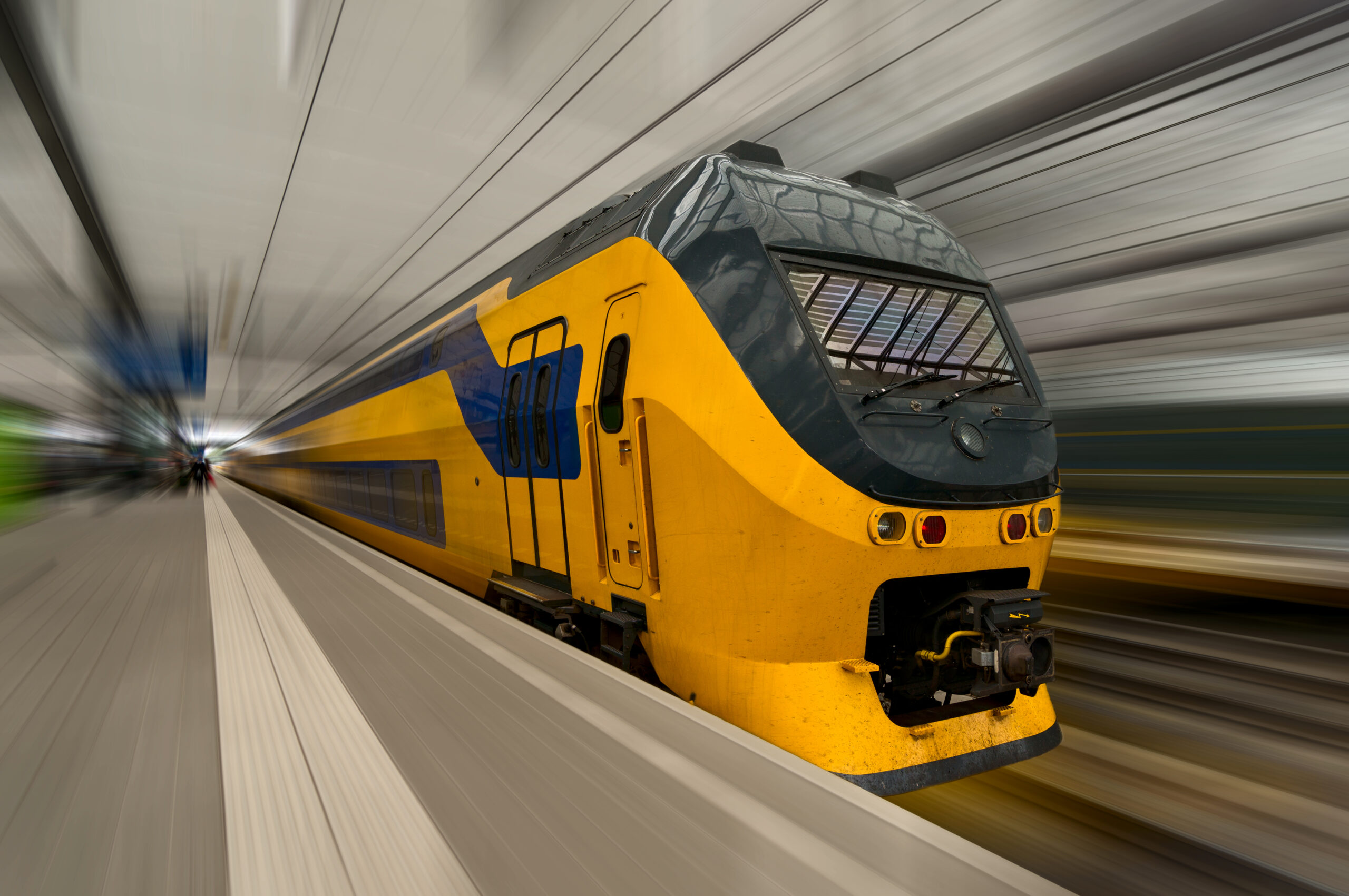Student Simulation Project in Public Transportation Crowd simulations at railway station Hoofddorp, The Netherlands
Written by Jurian Fijen – Amsterdam University of Applied Science – Built Environment, Mobility
During my last year at the Amsterdam University of Applied Sciences, Bachelor of Built Environment (Mobility), I used the software Pedestrian Dynamics® of InControl for my thesis about crowd simulations at railway station Hoofddorp, the Netherlands.
I did my research in a graduation studio within my study Built Environment, which was supervised by two teachers and the Haarlemmermeer council. Hoofddorp is the main town of the Haarlemmermeer municipality. My research goal was to find out whether Hoofddorp railway station is capable of handling all pedestrian flows in the coming years. Expectations are the station will become busier. Are adjustments needed to the station? The expected increase is partly caused by the North-South metro line which is planned to be extended from Amsterdam to Schiphol Airport and Hoofddorp. Because of this extension, pedestrian flows at the station will change and become busier. The big question is whether the bottlenecks (stair cases, platforms and concourses) at the station will be sufficient to handle an increasing number of travelers.
For my thesis I first examined the concept of crowd simulations and looked at how this could be used at railway stations. To find out whether Hoofddorp station can handle the increased demand, I looked at two things: which data and other information do I need to model pedestrian flows and how can I find out when capacity is reached?
I used the crowd simulation software Pedestrian Dynamics® of InControl to model and examine pedestrian flows. My supervisors from the university provided a Pedestrian Dynamics® Student Pro license for my thesis project. I used the program’s tutorials and examples to master the software, after which I started my own case. By loading an AutoCAD map of the station into Pedestrian Dynamics® the infrastructure was well implemented. Adding all data I gathered from the public transport time table, the available public transport equipment, pedestrians and accompanying numbers and routes, I was able to model the pedestrian flows into the station’s infrastructure

3D Simulation Model of Hoofddorp trainstation
In the model using capacity requirements one can find out bottlenecks’ capacity. The functionality offered by Pedestrian Dynamics® allows you to examine the station using frequency maps, density maps and flow counters which allow you to find the possible problems at the stations. This all can be clearly presented in a graph visualizing results over time. This program really helped to show me what a good pedestrian capacity study for Hoofddorp station could look like.

2D Simulation Model of Hoofddorp trainstation
My final assignment made me look differently at the built environment and public transport. When it comes to capacity problems in public transport, I mainly thought of too many passengers on the trains or too little space for even more trains on the track. It shows that stations will also have to be expanded in future, because it is becoming increasingly busy and there is too little room for passenger flows. I thought it was interesting to be able to demonstrate this in my thesis.
Personally, I think it can be interesting for many courses, such as Built Environment, Civil Engineering, Traffic Engineering, Urban Planning and Architecture, to include crowd simulations in the curriculum. It allows people to view outdoor spaces and buildings, such as stations, stadiums and shopping streets in a completely different way. Finally, we have seen recently how difficult it is to come up with good solutions for environments where the infrastructure is too narrow for too large groups of people.
I am happy that I used Pedestrian Dynamics® for my assignment. It is a great program for modelling pedestrian flows in stations. The manual, the contact with the people at InControl, the tutorial and sample models have all ensured that Pedestrian Dynamics® was a great program for me to work with. I would like to keep on using the program to further improve my skills and expand my knowledge about pedestrian flows.
There are many interesting research topics in the area of crowd simulation. At the moment, many organizations struggle with capacity issues and social distancing measures. Are you interested in a thesis project about crowd modelling with Pedestrian Dynamics? Pedestrian Dynamics Student Pro license is an affordable license for students working on their bachelor or master thesis.
Find more information here or contact our research and education team at education@www.incontrolsim.com

